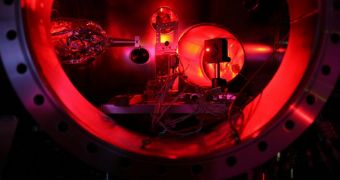The most powerful X-ray laser in the world recently managed to set a new record, when it heated a piece of target material to 2 million degrees. The achievement is reported in the January 25 issue of the top scientific journal Nature.
U.S. Department of Energy’s (DOE) SLAC National Accelerator Laboratory physicists were not only able to create the super-heated sample, but also managed to probe and analyze it in a controlled manner.
This is the first time when this is shown to be possible in practice. The investigation is very important because it could help astrophysicists shed new light on some of the most mysterious phenomena in the Universe, such as for example what goes on in the heart of stars.
Similar conditions may also exist at the very core of planets. Understanding how such matter behaves, and why, could lead scientists to a better understanding of the way the Universe is set up. In addition, the data could also be used to advance experiments on nuclear fusion technologies.
In order to conduct this investigation, the team requested and gained access to the SLAC Linac Coherent Light Source (LCLS), an installation capable of producing laser pulses billions of times brighter in X-ray wavelengths than any other before it.
The laser was trained on a small piece of aluminum foil, which was then blasted with short pulses of intense X-ray light. The 2-million-degree-Celsius mixture that result existed in a state known as “hot dense matter,” which is similar to a solid plasma.
One of the most interesting things about this experiment is that the process took only about a trillionth of a second to conclude. “The LCLS X-ray laser is a truly remarkable machine,” says Sam Vinko.
“Making extremely hot, dense matter is important scientifically if we are ultimately to understand the conditions that exist inside stars and at the center of giant planets within our own solar system and beyond,” adds Vinko, the lead author on the new paper.
He holds an appointment as a postdoctoral researcher at the Oxford University, in the United Kingdom.

 14 DAY TRIAL //
14 DAY TRIAL //